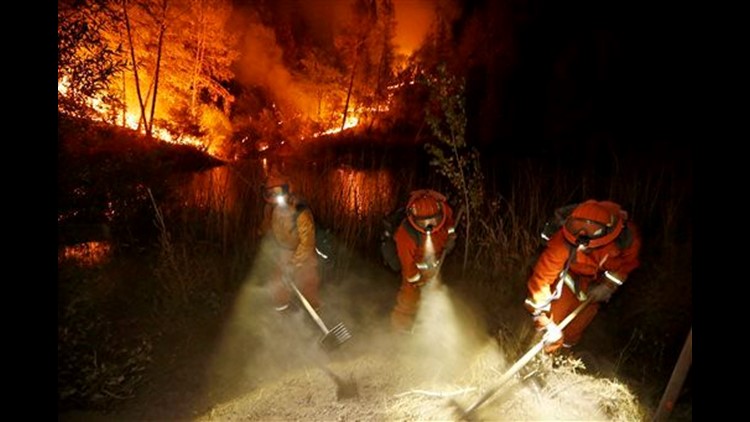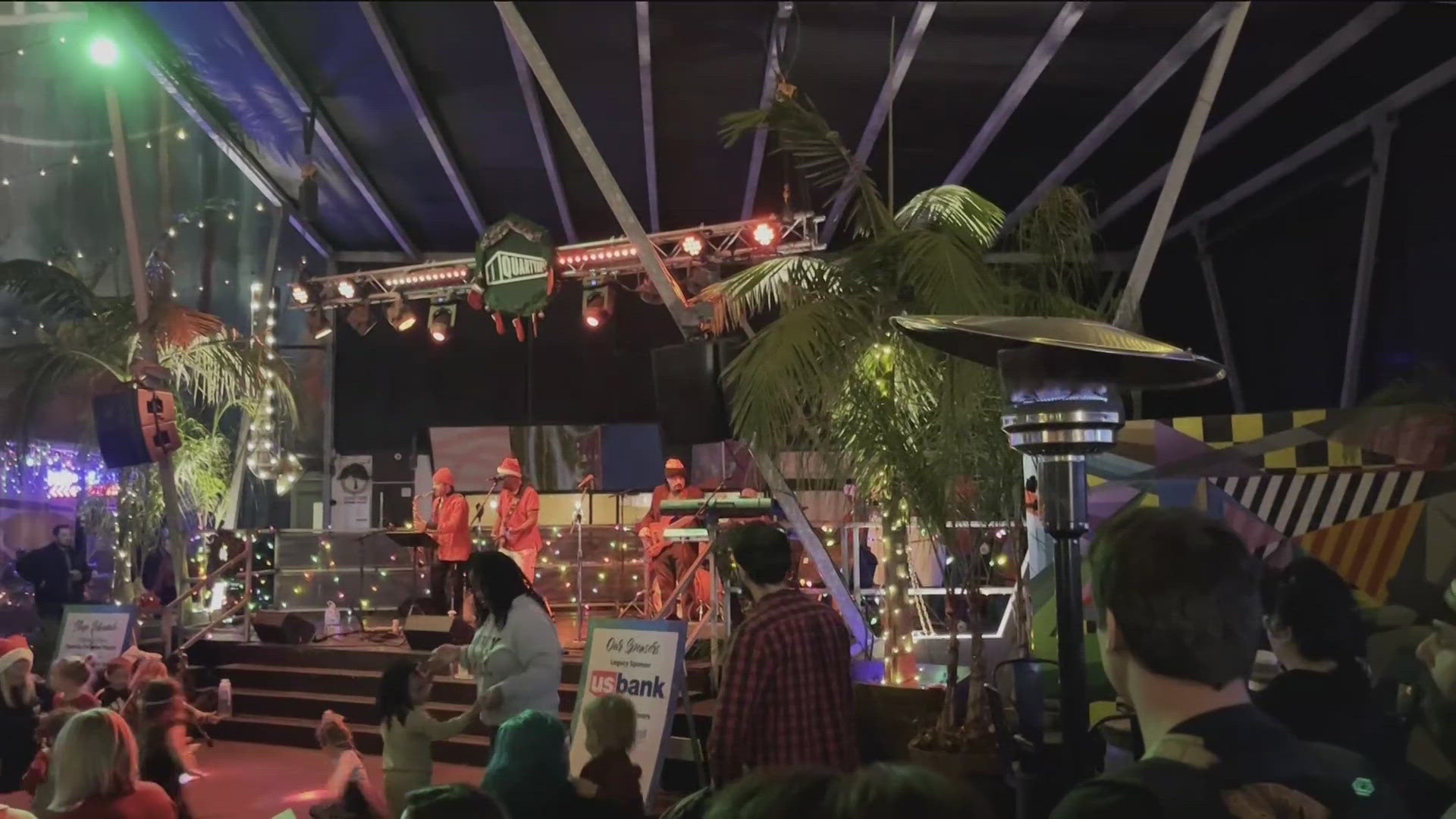MIDDLETOWN, Calif. (AP) — Earlier this summer, this small mountain town north of San Francisco opened its modest high school to residents fleeing an unusually ferocious wildfire nearby.
Now it is Middletown itself that has been evacuated — and gutted — by another blaze that shocked firefighters with its strength and speed.
The town's small cluster of shops and cafes was spared, but behind them flames propelled by erratic winds zigzagged down leafy streets, torching some houses while sparing others. On Monday, some residents returned to find nothing left of their homes but concrete foundations and smoldering rubble.
[RELATED STORY: Residents report heavy damage from California wildfire]
One weeping woman embraced her mother where their family home once stood, surrounded by blacked appliances, metal furniture and ash. Beige homes trimmed in white stood untouched nearby.
"I'm in shock. I want to cry. I'm looking at my neighbors' places, and they're all gone, and I'm still here," homeowner Jim Maurer said. "We're just shaking our heads."
Over the weekend, the blaze killed an elderly, disabled area resident who was trapped in her home.
The fire and another in the Gold Rush country of the Sierra Nevada foothills, about 120 miles to the southeast, were the worst of a dozen burning in the state. Between them, they have destroyed 535 homes and hundreds of other structures and displaced 23,000 people, Mark Ghilarducci, director of the Governor's Office of Emergency Services, told reporters.
Citing dry conditions from four years of drought, Ghilarducci called this summer's fires some of the most volatile he's seen in 30 years of emergency response work.
The fire that marauded through Middletown and other parts of rural Lake County, less than 100 miles north of San Francisco, was burning nearly unchecked, despite the efforts of fire crews.
Since starting Saturday, it has consumed more than 95 square miles, fueled by parched brush and trees, and injured four firefighters. An unknown number of residents were unaccounted for. Some of them might be safe, and emergency personnel and law enforcement planned to go to their last known locations once any dangers subsided.
While the destruction of Middletown was not complete, it was widespread.
The town's two-stoplight commercial strip was largely spared. Hardester's Market & Hardware was open Monday — Grant Hardester, one of the owners, was running the lights on a generator and taking IOUs to regulars who had not evacuated.
"Just to be able to buy something has lifted people's spirits and solved some problems," Hardester while a customer loaded two shopping carts with gasoline cans, ice, paper plates and water.
It was on the streets behind Middletown's shops and cafes where the capricious devastation unfolded.
On their rampage, flames destroyed some homes but left others standing. In many cases, firefighters made the difference. Sometimes it was simply the whims of the wind.
One two-story apartment complex of about 50 units was gutted, blackened cars with melted tires sitting near washers and driers and the skeletons of metal chairs. Yet a colorful play structure was untouched, and two lots away stood eight homes, behind a white picket fence.
"There was kind of a randomness of it because the wind was so erratic," Cal Fire Chief Dave Shew said as he stood in the apartment complex's ashes. "Some good firefighting activity saved structures; there just weren't enough people to save all of them."
About 15 miles to the northwest, the town of Cobb — population 1,700 — was badly damaged.
Adam Bailey returned home to survey the damage. He hoped to search for a relative's engagement ring, but the ash was still too hot. He lost his beloved Ford pickup, the first thing he ever took a loan out on, but his family was safe — and for that he was thankful.
Elsewhere in the area, landmarks were damaged or destroyed.
The fire devastated Harbin Hot Springs, a clothing optional retreat in the mountains between Middletown and Cobb. The area also is home to a string of geothermal power sites known as The Geysers, which use underground steam to generate electricity. Five of the 14 plants were affected, including power lines and wooden towers which held cooling water, said Brett Kerr, spokesman for Calpine Corp. which runs the facilities.
Though the flames also spread south into northern Napa County, the region's famous wine valley was not threatened. Standing in the way were peaks as high as 4,300 feet.
California has seen about 6,000 wildfires this year — about 1,500 more than this time last year.
Lake County has been particularly hard hit. In late July, a wildfire east of Clear Lake destroyed 43 homes as it spread across 109 square miles. It was that fire which saw Middletown's high school serve as an evacuation shelter.
As firefighters drew close to surrounding the blaze, another fire erupted Aug. 9 several miles from the community of Lower Lake.
Jim Walsh was at the Napa County Fairgrounds on Monday morning sitting around a card table with other evacuees. It was the third time this summer he had to flee Lower lake.
This time he left with clothing, camping gear, his dog and his drones.
"My house, I hope, is standing," he said.
East of Fresno, California's largest wildfire marched away from the Sierra Nevada's Giant Sequoia trees, some of which are 3,000 years old, fire spokesman Dave Schmitt said. The fire, which was sparked by lightning July 31, has charred 211 square miles and was nearly 40 percent contained.
___
Pritchard reported from Los Angeles. Contributing to this report were Haven Daley in Middletown, Elaine Thompson in Cobb, Don Thompson in Sacramento, Kristin J. Bender and Paul Elias in San Francisco, and John Antczak in Los Angeles.
Copyright 2015 The Associated Press. All rights reserved. This material may not be published, broadcast, rewritten or redistributed.



